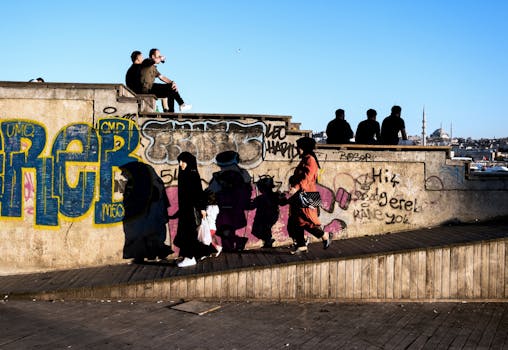
Cultural Fusion: Embracing Diversity in European Lifestyles by 2025
Cultural Fusion: Embracing Diversity in European Lifestyles by 2025 is a topic of great importance as we move towards a more globalized and interconnected world. As we approach the year 2025, it’s essential to recognize the significance of cultural diversity in shaping European lifestyles. In this article, we’ll delve into the concept of cultural fusion, its benefits, and how it’s transforming European communities.
What is Cultural Fusion?
Cultural fusion refers to the blending of different cultures, resulting in a unique and diverse cultural identity. This phenomenon is becoming increasingly prevalent in European societies, where people from various ethnic and cultural backgrounds are coming together to form a distinctive cultural landscape. Cultural fusion is not limited to food, music, or art; it encompasses a broad range of aspects, including language, traditions, and values.
Benefits of Cultural Fusion
The benefits of cultural fusion are numerous and far-reaching. Some of the most significant advantages include:
- Enriched Cultural Heritage: Cultural fusion adds depth and richness to European cultural heritage, allowing for a more diverse and vibrant cultural landscape.
- Increased Creativity: The blending of different cultures fosters creativity, innovation, and progress, leading to new ideas and perspectives.
- Improved Social Cohesion: Cultural fusion promotes social cohesion by breaking down cultural barriers and encouraging understanding and acceptance between different communities.
- Economic Growth: Cultural fusion can contribute to economic growth by attracting tourism, investment, and talent from diverse cultural backgrounds.
Examples of Cultural Fusion in European Lifestyles
There are countless examples of cultural fusion in European lifestyles, including:
- Cuisine: The fusion of different culinary traditions has given rise to unique and delicious dishes, such as Korean-Italian fusion or Indian-Spanish fusion.
- Music and Arts: The blending of different musical and artistic styles has resulted in innovative and captivating performances, such as Afro-Latin jazz or Asian-influenced street art.
- Fashion: Cultural fusion has inspired fashion trends, with designers incorporating traditional clothing and textiles from diverse cultural backgrounds into their designs.
- Language: The fusion of languages has led to the creation of new dialects and slang, reflecting the diverse cultural identities of European communities.
Challenges and Opportunities
While cultural fusion presents numerous benefits, it also poses challenges, such as:
- Cultural Homogenization: The risk of cultural homogenization, where smaller cultures are overwhelmed by dominant cultures, is a concern that needs to be addressed.
- Social Tensions: Cultural fusion can also lead to social tensions, as different communities may struggle to adapt to changing cultural norms and values.
- Language Barriers: Language barriers can hinder communication and understanding between people from diverse cultural backgrounds.
However, these challenges also present opportunities for growth, innovation, and progress. By embracing cultural fusion and addressing its challenges, we can create a more inclusive, diverse, and vibrant European society.
Conclusion
In conclusion, cultural fusion is transforming European lifestyles, enriching our cultural heritage, and promoting social cohesion. As we move towards 2025, it’s essential to recognize the significance of cultural diversity and work towards creating a more inclusive and accepting society. By embracing cultural fusion and addressing its challenges, we can build a brighter future for European communities and celebrate the beauty of our diverse cultural identities.





